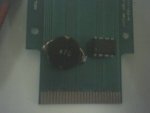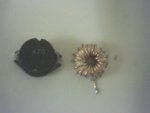IgorT
0
- Joined
- Oct 24, 2007
- Messages
- 4,177
- Points
- 0
I wonder, if i could still convince them, i'm a student...woop said:I have had a bit more luck in ordering samples than you guys. i think i told coilcraft i was a student. anyway i got 6 of the 4.7uH ones and 2 100uH inductors on the way
and i got national to send some samples of the LM3410 but i had to pay shipping
Did you have to give them information about your faculty and your proffesor, like they say on the page?
Well, i tried explaining what my company does, and hope i get an answer tomorrow.. Otherwise, i tried ordering some inductors from them, and while they are cheap, they simply don't offer a normal shipping method.. The shipping prices started at 122$ and the lowest was 44$.. I don't understand, why they can't offer normal shipping... The same way they use for sending samples would be perfectly fine...
If i can't convince them to give me samples or at least offer normal shipping, i will make another sample order as a student, but to my friend in another city, so they don't get suspicious...
I don't have such a meter, and Conrad doesn't carry them, but i saw them on the net for around $60US..woop said:so you guys have inductance meters or are you just winging it to wind your own inductors?
But i do have some ferrite cores, with known AL values, so i used a formula, to calculate the number of windings needed. N = sqr(L/AL) Didn't help much..
In another case, i had a 22uH coil, and when i was trying to pull it out of that cardboard they are glued in, it's enclosure came off. Since it's resistance was too high, i took the wire off, and counted the turns, and wound a thicker wire on it with the same number of turns, hoping it would work. Well, it did work a bit better, but not much..
In pretty much all cases, the voltage increased to 5V quite fast (the better the inductor, the faster), but as soon as i wanted to pull some real current out of it, the voltage dropped miserably... You can connect pretty much anything as the inductor, and get the voltage the IC is set to out on the other side, but once you need it to actually have some power, everything becomes weird..
It really must be a black art, like Chimo said..





